I have never liked maple syrup. Growing up in Spain I didn’t have many chances to get a taste for it, or even to try it more than twice, if I am being honest. I think the first time I tasted it was when I went to a brunch place in central Barcelona that was full of tourists. The waitress greeted my friend and I in English which made me feel hesitant to get in but we had been waiting for a while in the queue and also, I was quite hungry.
We ordered something very non-Catalan, because it was fun. We went for a stack of pancakes that was served with maple syrup. I think there may have been some fruits in there as well (to keep some of the Mediterranean freshness), but I can’t be sure. What I can recall now is that I thought the syrup had ruined my breakfast. It was runny and a dark golden color. But it didn’t taste anything like honey, which I was very used to, or even caramel. It was just weird.
I may have given it a chance some other times but for many years the idea of maple syrup had a negative tint. I just didn’t like it. Still, as a food writer you learn to try things multiple times, and often not only with your taste buds.
When I moved to New England (USA) I found out maple trees also grew here. The climate is not so different from Southern Quebec, Canada, where most of the global production of maple syrup takes place. I then checked when it was best to see it being produced and arranged some visits to different local farms.
What is Maple Syrup
Maple syrup is a syrup made from the sap of maple trees. The sap actually is not sticky at all, that comes later with the boiling. It looks and tastes like water, but actually has a very small percentage of sugar in it, so if it’s boiled down and reduced you can get to the syrupy consistency.
Three species of maple trees (Acer) are most commonly used to produce syrup: the sugar maple (Acer saccharum), the black maple (Acer nigrum) and the red maple (Acer rubrum). You may have guessed right, the sugar maple is the one that has the most amount of sugar in the sap, and that’s why it’s the preferred species. The percentage of sugar may vary from roughly 4%-1%; there are better and worse years. When I visited some farms last weekend they told me this year was not very good, but they expected worse. The sap contained about a 1.5% sugar, which means they would need more of it to achieve the same amount of syrup as other years.
Sugarhouses (the place where the sap is boiled) have been busy these past few weeks as the maple sugaring season is a very short one. It normally lasts from 4-6 weeks between late February and early March. Basically the end of winter and the beginning of spring. This is so because the trees only start producing the sap when nights are below freezing and the days are mild (40°F/4°C). The sap flows then, from the roots up to the branches as it’s an essential nutrient for the tree to start developing its leaves, awakening from the long winter. This is why sap is never collected from trees that are less than 10 inches in diameter, as you could harm the tree by taking these essential nutrients from it and stopping its development.
When was it created
Maple trees also grow in Asia, some parts of Europe and northern Africa, but it was the inhabitants of North-Eastern America who thought of a way to take advantage of its sap.
The first written observation of maple trees yielding a sweet sap in North America was in 1557, by the French scribe André Thévet. 9 years later Marc Lescarbot describes in his work Historie de la Nouvelle-France (1609) the collection and “distillation” of maple sap by Micmac people of Eastern Canada. But before the colonisers discovered this sweet treasure, the local inhabitants had been doing it for thousands of years.
There may be no written testimonies about previous interest in maple trees in the area, but there is no shortage of oral stories. What is now called the “Maple Belt” was the land of the six indigenous nations that constitute the Haudenosaunee Confederacy. This includes the the Mohawks, Oneidas, Onondagas, Cayugas, and Senecas that “found a way to unite the nations and create a peaceful means of decision making”. As they say on the Confederacy’s website: “The exact date of the joining of the nations is unknown and said to be time immemorial making it one of the first and longest lasting participatory democracies in the world. […] The Haudenosaunee Confederacy’s constitution is believed to be a model for the American Constitution.”
It is possible the first people who discovered the sweetness of the maple tree was by eating “sapsicles”, the icicles of frozen maple sap that form at the end of a broken branch when temperatures are freezing. As the ice forms, some of the water evaporates, leaving a sweet treat behind. Indigenous Americans found a way to process the sap and make it a commodity that could be used to cure meats, as a sweetener for bitter medicines and even traded in the form of dried sugar.
The way they had to collect the sap was tapping the tree by making a hole in the bark and placing a piece of wood in it to serve as a spout. The clear sap would drip from it into a bucket below that would collect all the liquid. This method is still used by small farms nowadays.
Once the sap was collected, it was stored overnight in pots (before they used to be clay, nowadays metal or plastic is used instead). An ice layer would form on the top and in the morning it would be skimmed off and the remaining water boiled down. To do so they would fill up a wooden vessel with the liquid and place fire-hot stones in it to make it boil up.
Early European settlers learned how to process maple sap by the locals. They set up sugar camps in the woods where maple trees were most plentiful and started drilling half-inch holes in them to let the sap out. They first tried slashing the trees with an ax but soon discovered they were actually damaging the trees… who would have thought?
Europeans would build the sap in a series of iron kettles hanging on an open fire. As the syrup got thicker in one pot, it was transferred to the next one and fresh sap was added to the first kettle. This way, they always had the last kettle full of syrup. When it was thickened enough, the syrup was stirred until it began to crystallise and poured into wooden molds to make sugar.
Actually, the consumption of maple syrup is quite recent as for the longest time it was much better to process it into sugar blocks that were dry and portable. Massachusetts Maple Producers Association talks about the importance of this sweet product for New Englanders:
In addition to providing a homemade source of sugar, the maple sugar was also used for trade or was sold. Many colonists made far more maple sugar than they could use themselves, sometimes as much as a thousand pounds per family. This excess was valuable to the early settlers as it provided some income or could be traded at local stores for other food and supplies. This locally made sugar was also important to the New Englanders because it was a sugar not made by the slaves of the West Indies. Our third president, Thomas Jefferson, was so much in favor of the United States producing its own maple sugar that he even started a plantation of sugar maples at his home, Monticello.
How is it processed
There are still farmers that hung buckets under the drilled holes of the maples trees in their sugar bushes (maple tree stands). Most of them, though, they prefer the use of a tubing system as it’s much more efficient. The sap runs inside the tubes and fills up tanks that will be send to the boiling house, also known as sugarhouse or sugar shack. Some even use a vacuum system that sucks the sap out of the trees to increase yield.
However it’s done, it takes about 40 gallons of sap to make one gallon of syrup. This is unchangeable because it all depends on the sugar content present in the sap. What you can do is to speed up the process. Tubing helps as also do reverse osmosis filters that remove some of the water from the sugar (from 2% sugar concentrate to 4%), so when it arrives to the boiler, the process takes less time.
Some use oil-fuelled furnaces but when I visited Grand Maple Farms, they were burning wood, which made the process look very down to earth. Below you can see the video I created to show the processing of the sap into syrup. They even gave us donuts to eat with their syrup!
Ron Kay, owner of Maynard Maple, told me he doesn’t use the reverse osmosis machine. He has it, but it’s broken. Also, according to him, it speeds up the process but maybe too much. There is more risk to burn your syrup.
The liquid coming out of the evaporator (boiling machine) may be different in color, and there’s no control to it:
Golden Color. It is light in color and delicate in flavour and is usually made early in the season.
Amber Color. Still light in color with a more full-bodies maple flavour.
Dark Color. It is down in color and has a robust taste.
Very Dark Color. It has a deep brown color and a strong taste. It is made late in the season. Normally used for cooking and baking.
There is no better or worse as all these different colors actually belong to what the USDA consideres Grade A, only applied to pure maple syrup. If it has an off-flavour, or is not uniform in color, it is classed as “processing grade” maple syrup and it’s sold in bigger containers. If the product doesn’t even meet the standards of “processing grade”, including a fairly characteristic maple taste, it is classified as “substandard”.
All the farms I visited during this maple sugar season, only produced Grade A. In Massachusetts most of the producers are small and run by families. Some of them offer visits, like Natick Community Organic Farm, where I learned about the ancient techniques of processing the maple sap; and some others are just happy to have visitors pass by to shop their products and to be interested in their lifestyle.
I must say, I have now tried a lot more maple syrup than I did before arriving to New England, and I may be growing a taste for it. It may be because I also learned how to process it. It didn’t take boiling it up but understanding the history, seeing the love people put into this national treasure that made me feel it now tastes much better.


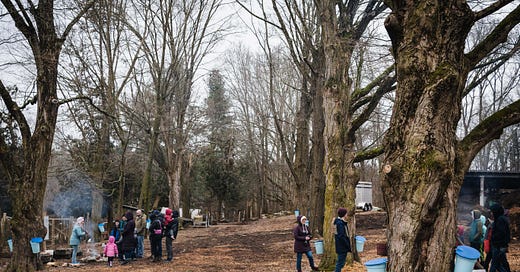


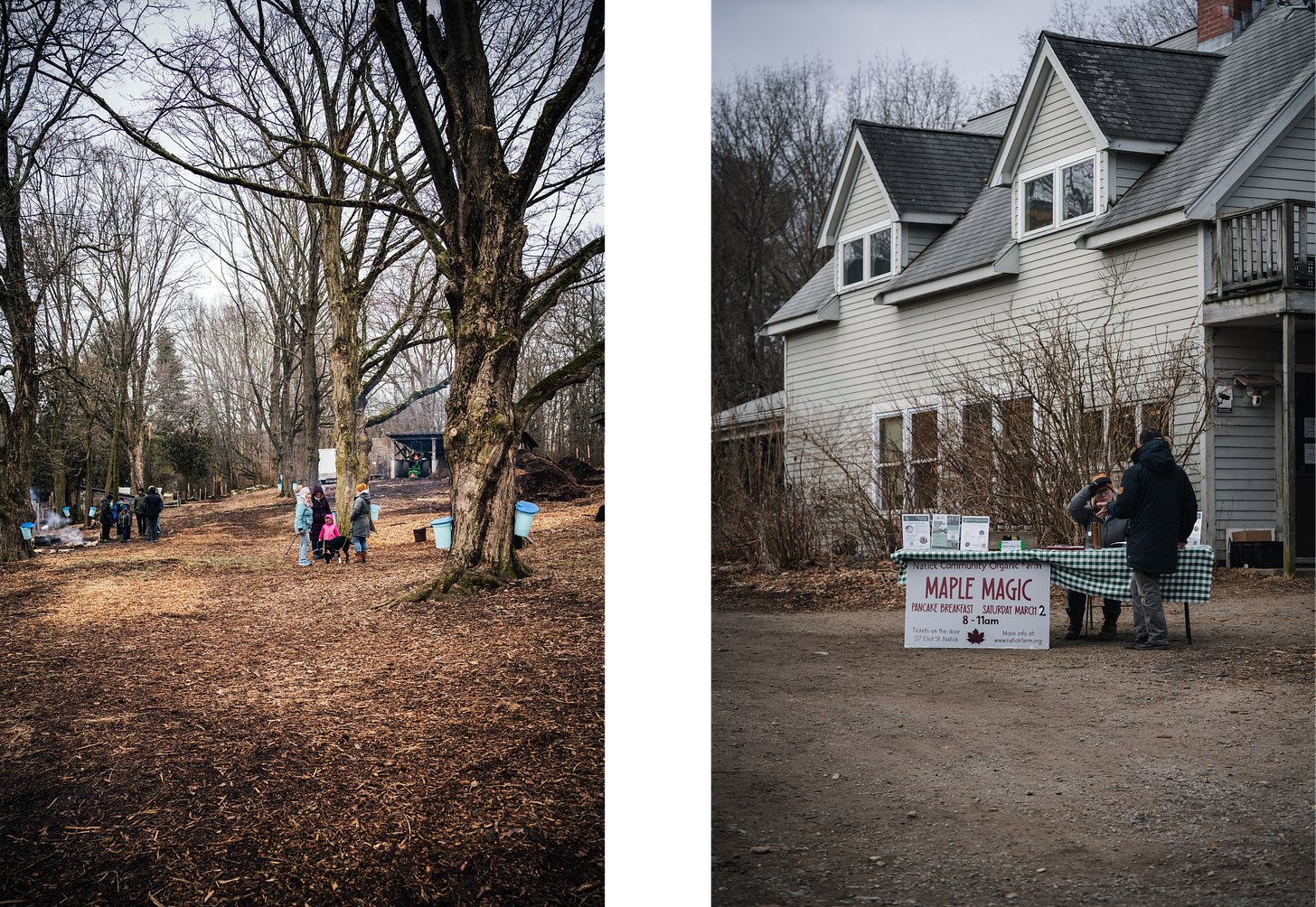

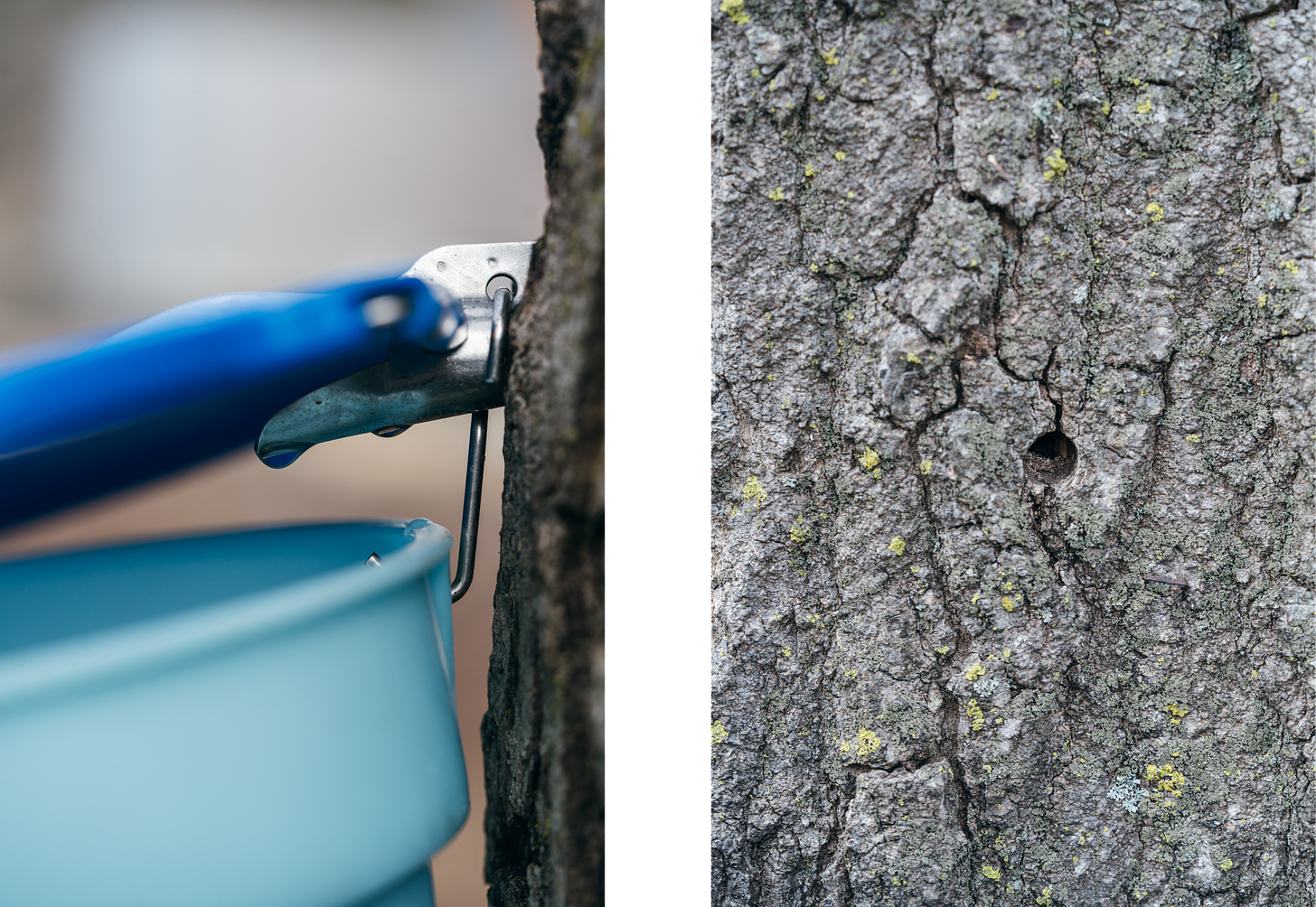
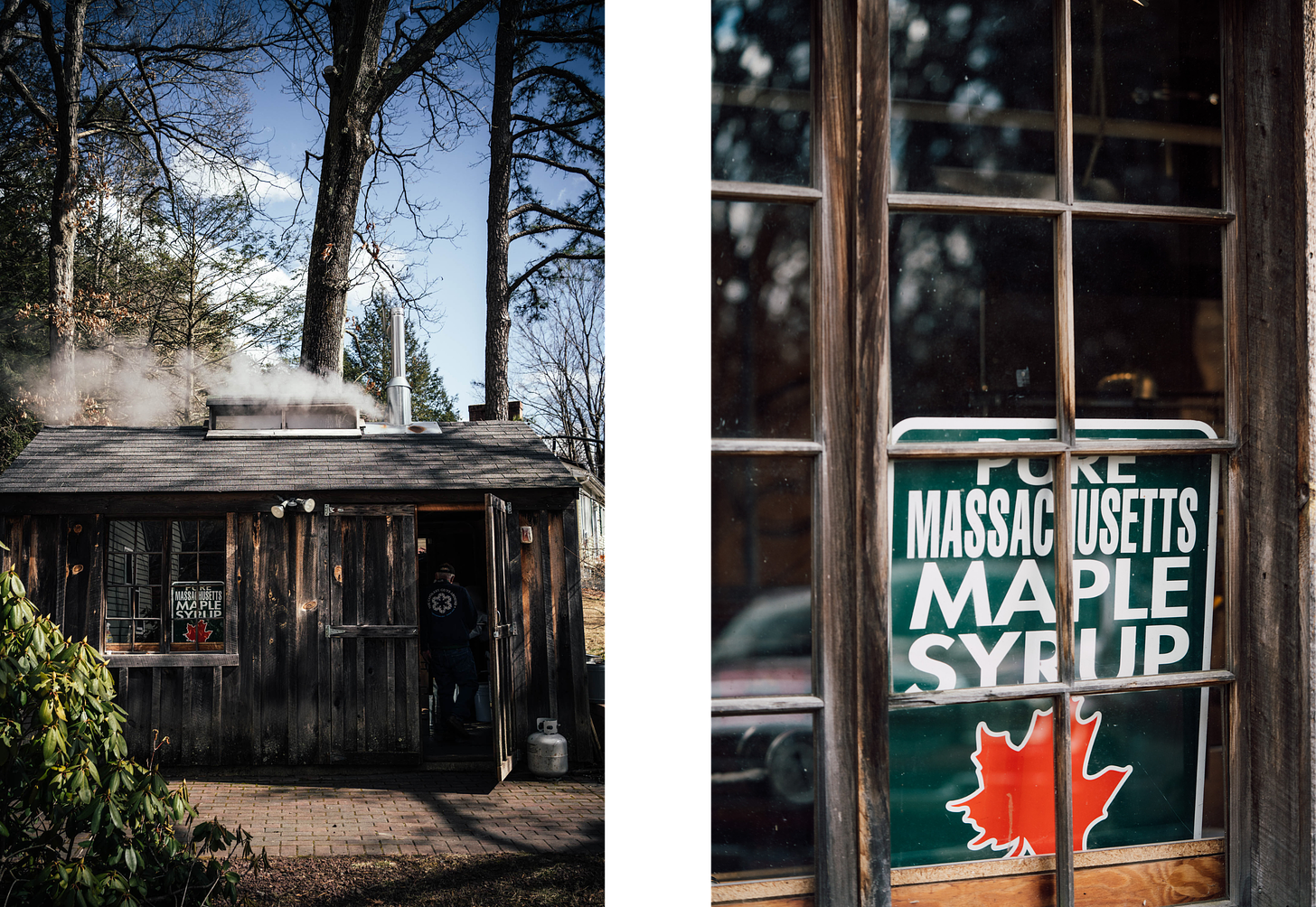
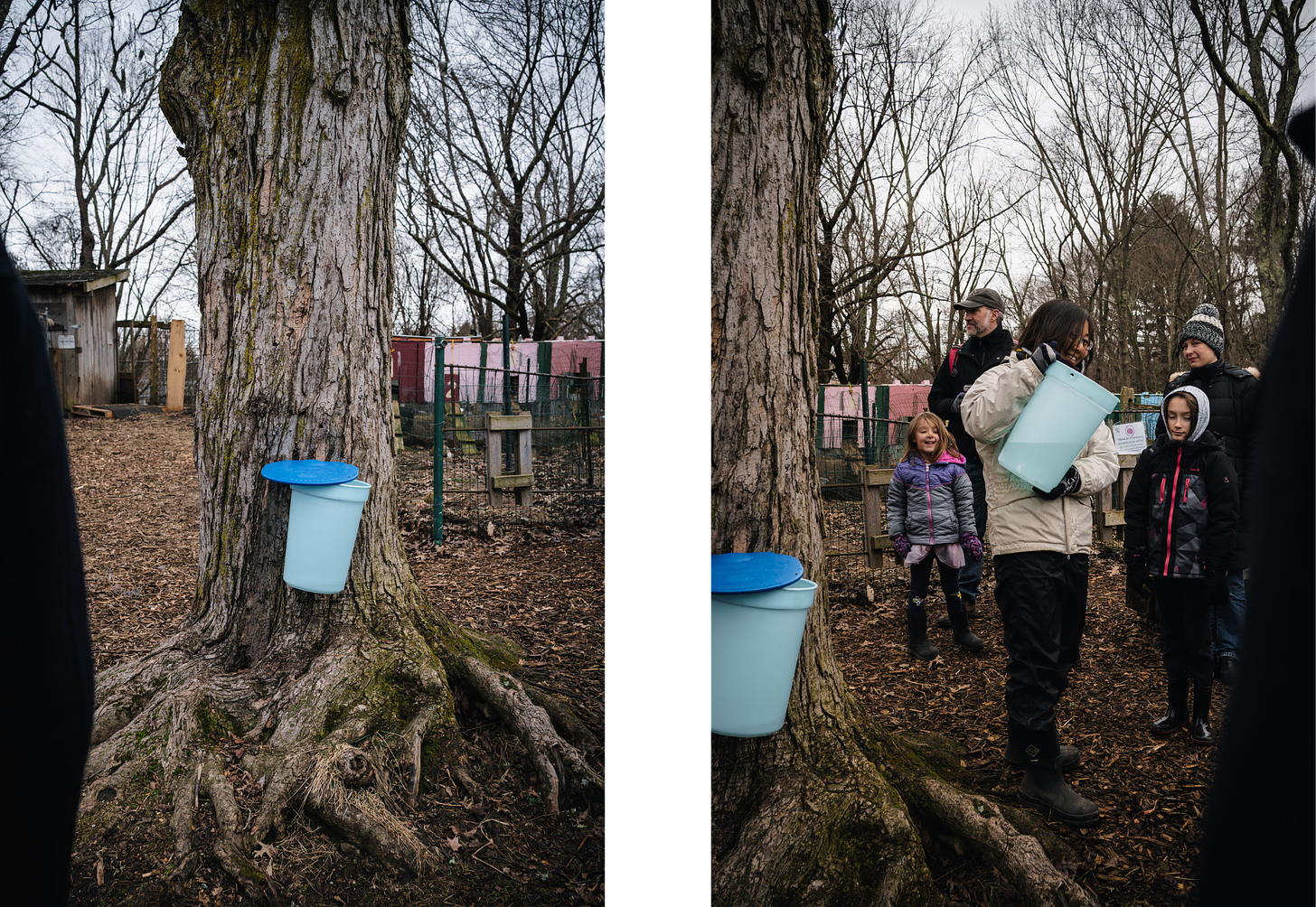
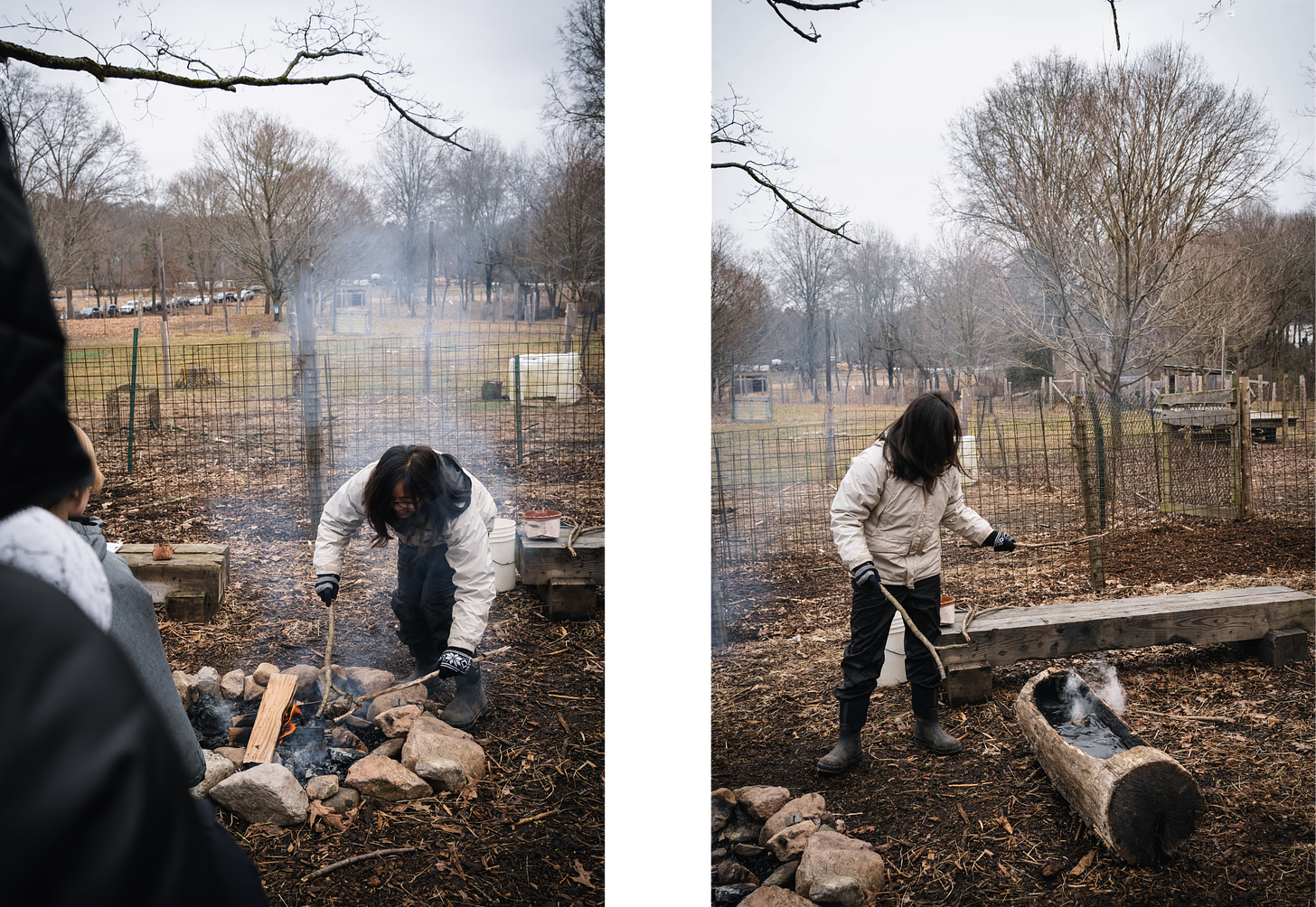
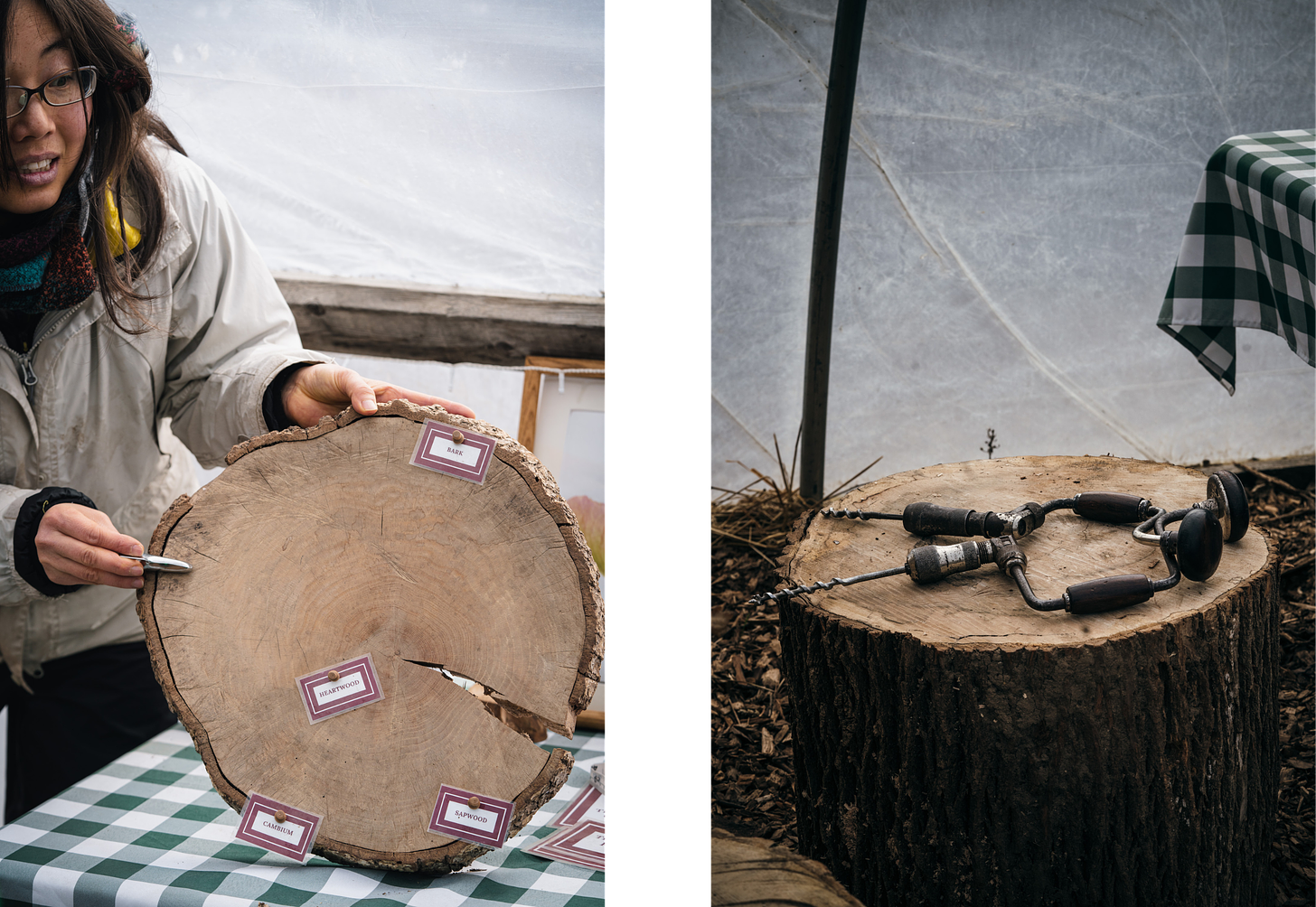
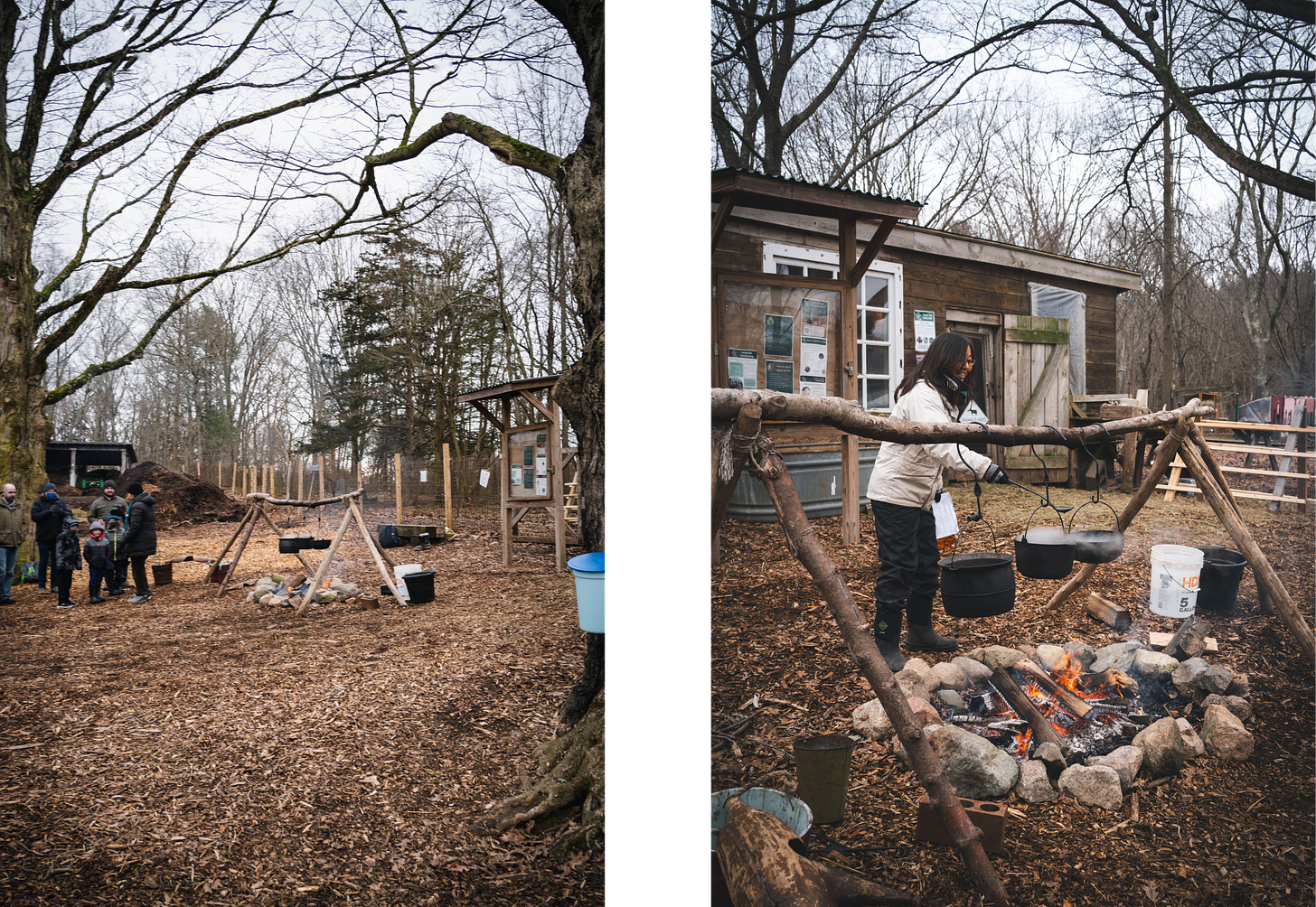
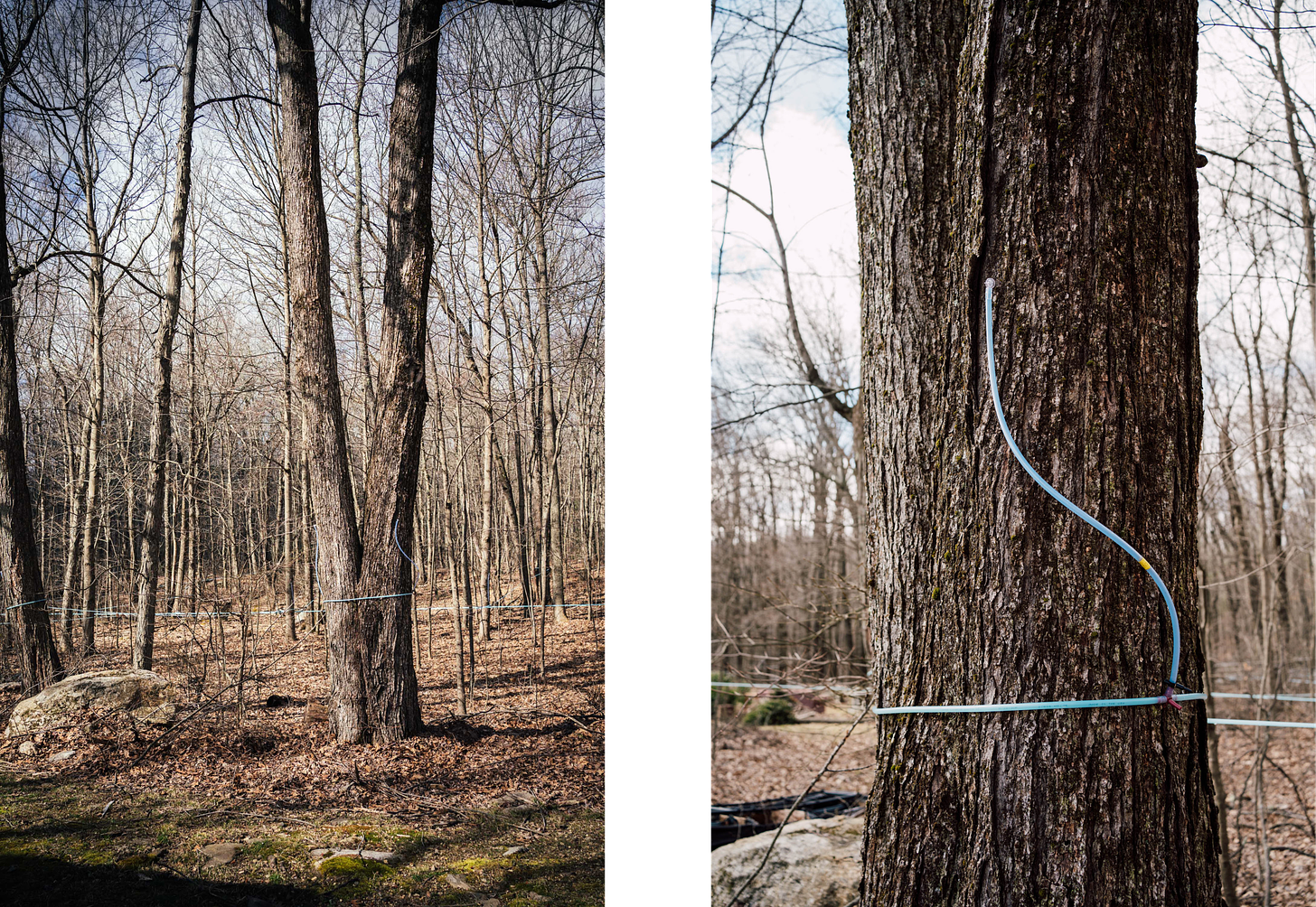
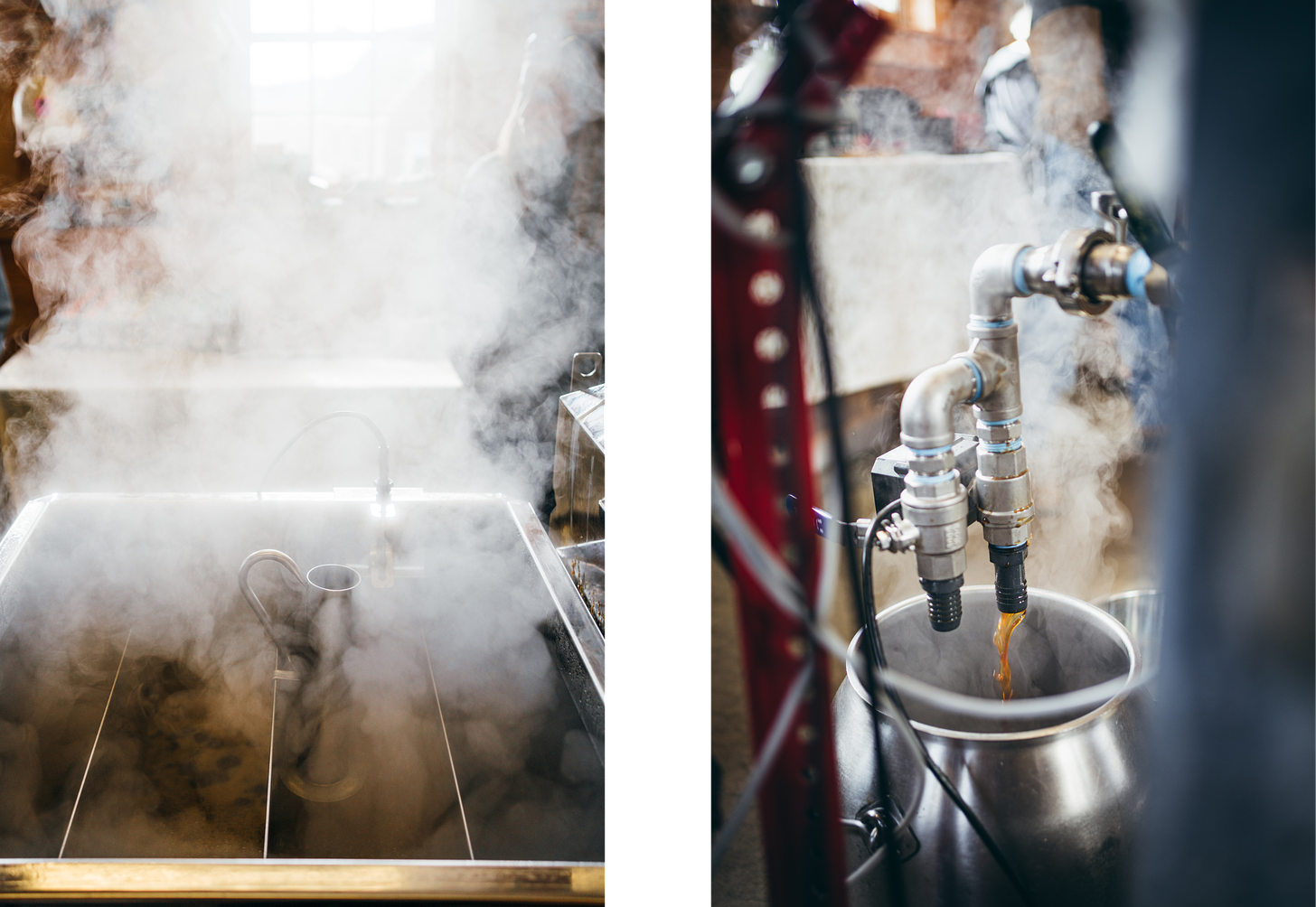

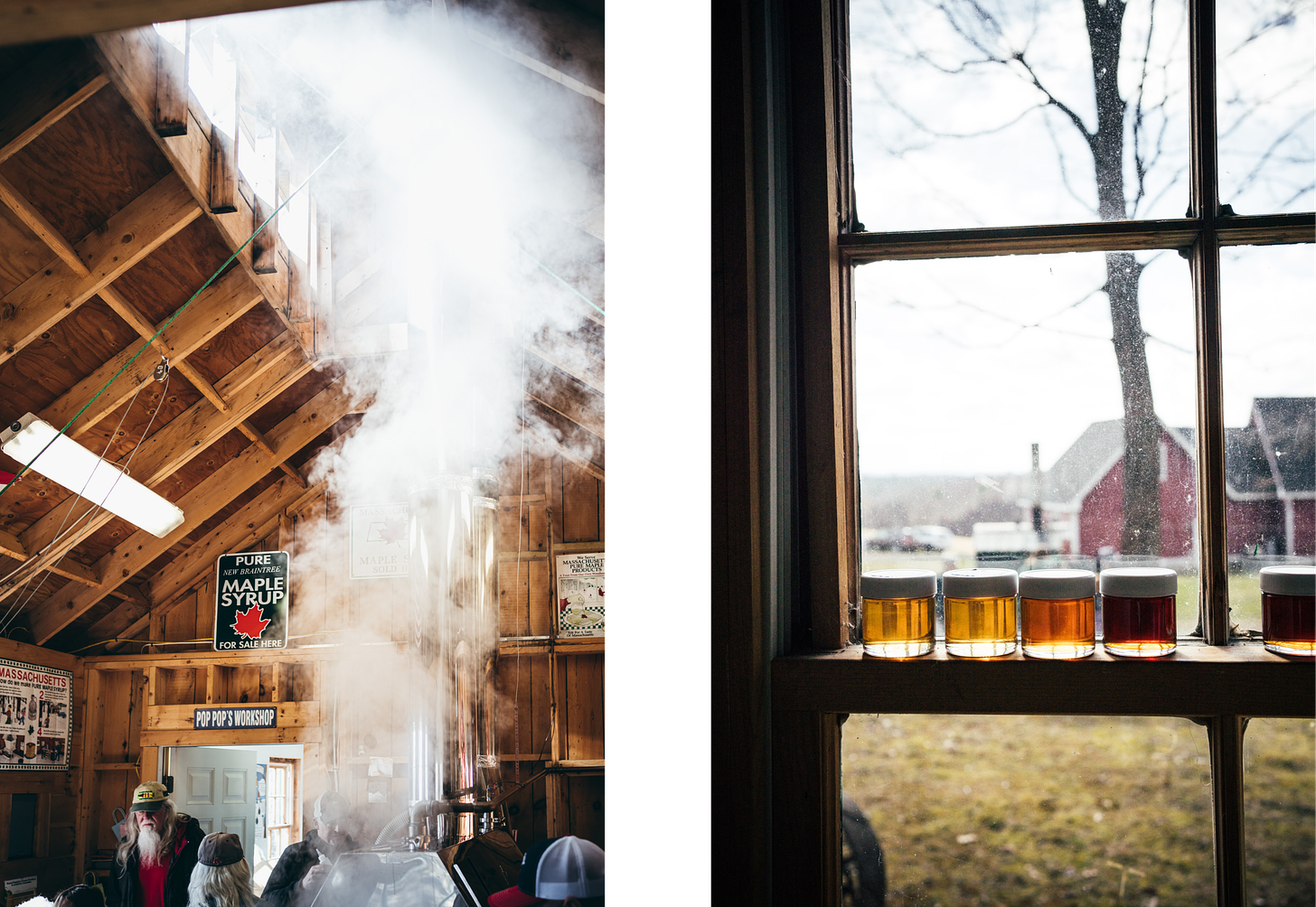
I had some maple syrup earlier today and said to myself “gosh I love this stuff so much” - so I hope one day that’s your experience too!